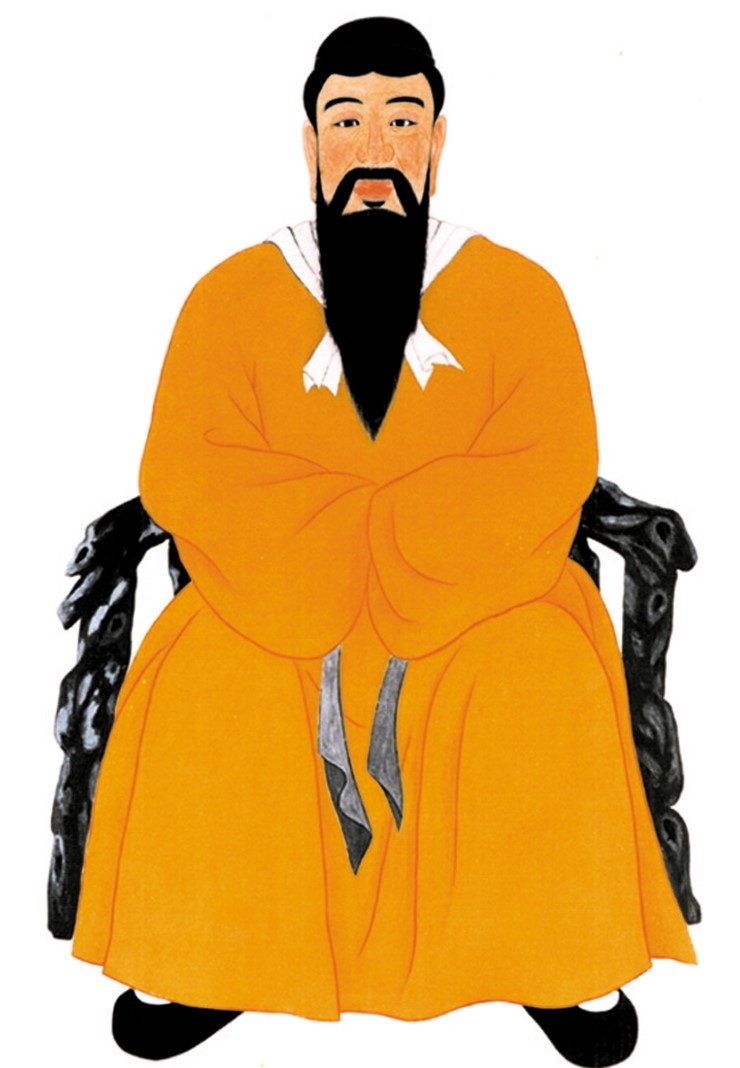Previously…
Last month, we learned about the first arrival of tobacco and its immense popularity in Joseon. Today, we will discover the problems it caused and how the practice of smoking changed over time in accordance with the social stratification of Joseon dynasty.
Not Loved by All
Although extremely popular and widespread, not everyone was fond of smoking. Let’s take a look at the series of books called Seong-ho-sa-seol* (성호사설), translated as the “Treaties on Practical Topics”, written by Yi Ik (이익) in 1740. The renowned philosopher and confucian scholar writes:
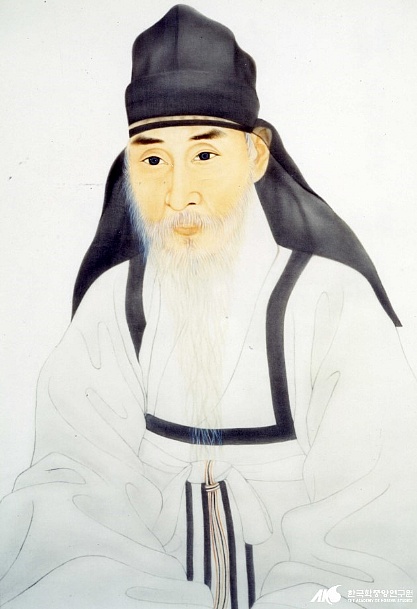
“… 안으로 정신을 해치고 밖으로 듣고 보는 것까지 해쳐서 머리가 희게 되고 얼굴이 늙게 되며, 이가 일찍 빠지게 되고 살도 따라서 여위게 되니, 사람을 빨리 늙도록 만드는 것이다. 내가 이 담배는 유익한 것보다 해가 더 심하다고 하는 것은 냄새가 나빠서, 재계(齋戒)하여 신명(神明)을 사귈 수 없는 것이 첫째이고, 재물을 없애는 것이 둘째이며, 세상에 일이 많은 것이 진실로 걱정인데, 지금은 상하노소를 막론하고 해가 지고 날이 저물도록 담배 구하기에 급급하여 한시도 쉬지 않으니 이것이 셋째이다. 만약 이런 마음과 힘을 옮겨서 학문을 닦는다면 반드시 대현(大賢)이 될 수 있을 것이고, 글에 힘쓴다면 문장도 될 수 있을 것이며, 살림을 돌본다면 부자가 될 수 있을 것이다.”
— 이익, 성호사설 만물문 남초 편.
“… Internally it [smoking tobacco] disturbs the mind, and externally it disturbs the sense of hearing and sight; It makes one’s hair turn white (greying of hair), ages one’s face, makes one’s teeth fall out earlier (weakens your teeth), and makes one lose weight, thus expediting the aging process. The reason why I say tobacco is more harmful and not beneficial is because:
Firstly, due to its bad smell, one cannot be clean and neat for the sacred/religious rites and ceremonies.
Secondly, it takes away one’s wealth (people spend money to buy tobacco).
Thirdly, it is truly troubling that there are so much work to be done in the world, but currently, everyone, despite their age, are busy trying to seek and purchase tobacco from sunrise to sunset.
If one transfers this willpower and strength (that they use to get tobacco) to studying, one can certainly become a great scholar; If one can transfer them to writing, they can become a prolific writer; And if one can transfer them into taking care of one’s household (management), they can become a wealthy person.”
— Yi Ik (Author), Seong-ho-sa-seol* (Title of the book; Treaties on Practical Topics) Man-mul-moon* (Part 2 of five parts/topics in the book), Nam-cho-pyun (A section about tobacco).
tl;dr: Smoking tobacco is terrible for you. Spend the time and effort of getting tobacco plants into something productive like studying and managing, and you will surely become successful and rich.
* More about Seong-ho-sa-seol (성호사설):
English translation of the book’s title is: “Treaties on Practical Topics“, according to Sungsil University of Korea.
Written by Yi Ik (이익), a philosopher and a confucian scholar during Joseon dynasty in 1740.
This encyclopedic series, five books in total, is comprised of various topics (astronomy, geography, history, government, military, economy, etc.) and records of things the author learned or heard over the course of forty years.
Yi Ik embraces western knowledge/technology and criticizes the social conditions and the academic trend of Joseon during that time period.
* More about Man-mul-mun (만물문):
One of the five topics covered in the book. This section, Man-mul-mun (만물문), covers 368 topics mostly related to household and ordinary life, regarding clothing, food, agriculture, domesticated animals, plants, money, weights and measures, weapons, and western equipment/instruments.

Desolation of Tobacco
I See Fire
Smoking brought more trouble besides the obvious health issues. One of many problems were the frequent fire and destruction of buildings and houses. In the Annals of the Joseon Dynasty, it is written:
“동래(東萊) 왜관(倭館)에 화재가 발생하여 80칸을 모두 태웠다… 왜인들이 담배를 즐겨 피우므로 떨어진 담뱃불로 화재가 일어난 듯하다.”
— 광해군 15년, 1623년 2월 15일.
“The fire burned all the 80 rooms of the Dong-leh Waegwan* (동래 왜관)… the Japanese enjoy smoking tobacco so the fire from a fallen cigarette is the probable cause of this conflagration.”
— 15 February 1623.
* More on Dong-leh Waegwan (동래 왜관):
Dong-leh (동래) was an older name for the modern day Korean port city of Busan (부산). Waegwan (왜관) was a Japanese office of trade in Joseon. It is equivalent to a combination of modern day Chamber of Commerce and Industry and an embassy. Other office locations were in Jinhae (진해) and Ulsan (울산).
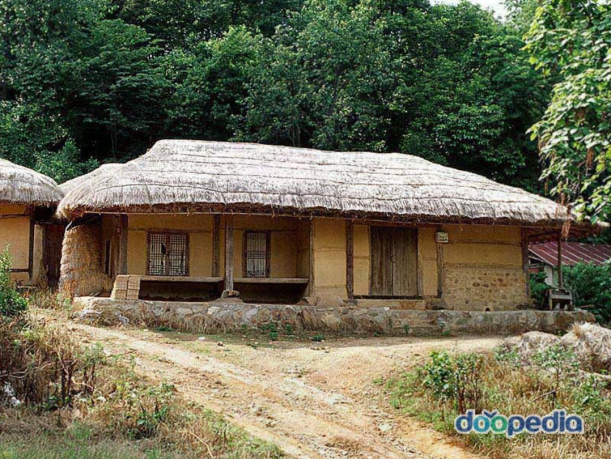


There were many cho-ga-jib (초가집; thatched houses or grass-roofed houses) back then. These buildings were built from cheap but extremely flammable materials such as dried grass, reed, and wood. These houses would often catch on fire (from smoking) and an entire village could be burnt down. So King Injo (인조) put on a national decree which banned tobacco smoking for a while.
In 1717, another fire was caused by smoking in Choong-chung (충청) region. The government realized that this was a serious problem and in March of that same year, King Sook-jong (숙종) officially outlawed smoking tobacco.
Tobacco Plantations
As mentioned in the previous post, many farmers began to plant tobacco because it was a great high-demand cash crop. However, soon, more farmlands were used to grow tobacco plants instead of growing edible plants (wheat, rice, corn, potatoes, beans, etc.).
Furthermore, during famine and drought, some people starved to death because they traded rice with tobacco to smoke. Finally, twenty seven civil servants pleaded in the court of King Jungjo (정조) to establish a national ban on tobacco plantations. But the king, who was an avid smoker, denied the request and left the matters in the hands of the provincial inspectors. In 1732, King Yungjo (영조) ordered a royal decree which forbade planting of tobacco in the three regions of Yung-nam (영남), Ho-nam (호남), and Choong-chung (충청).
Smuggling
Tobacco was indeed a domestic problem but it caused foreign relations headaches too. During this time period, tobacco was banned in the Qing dynasty of China. The demand was still extremely high so Joseon merchants smuggled the illegal plants across the border. The Annals of Joseon Dynasty records of an incident in 1638, when a Joseon man was caught smuggling tobacco and was reprimanded by a Qing general.
Because this brewed unwanted tension with Qing China, Joseon government decided to wield an iron fist. If someone was caught smuggling more than 1 geun (600 g), they were executed (decapitation). The consequence of smuggling anything less than 1 geun (600 g) was imprisonment and other various punishments.
Clash of Confucian Ideas
Nevertheless, throughout the late 17th to early 18th century, popularity of smoking continued.
In the beginning, there were no defined “Rules of Smoking” and the early practice of smoking was relatively free regardless of one’s gender, age, or social class. But due to the influence of Neo-Confucianism, known as joo-ja-hak (주자학) or sung-lee-hak (성리학), special rules of smoking quickly emerged in the late 18th century Joseon.

Yi Duk-Moo (이덕무), a renowned scholar, wrote in his book Chung-Jang-Gwan-Jeon-Suh (청장관전서) that the sight of children smoking is not good to look at because tobacco is harmful. He was concerned about the children who were already addicted to tobacco. Yi Duk-Moo described the act of children smoking with adults as contumelious and called the adults who offered or encouraged children to smoke contemptible and abject.
King Suk-jong (숙종) and King Yung-jo (영조) deemed smoking before important ceremonies and rituals frivolous and imprudent, thus banned them entirely.
Smoking and Social Stratification
The upper class began to create their own “style” or “etiquette” of smoking, mostly to separate themselves from the lower class. This imposed and maintained the rigid caste system of Joseon dynasty.
There were many etiquette to follow: Offer guests tobacco to smoke and light their pipes for them; do not smoke at important or high-toned events and places; do not smoke in front of people who were older, who held a higher office, or who were in the higher social class; do not discard the ash carelessly (especially while cooking); for women, do not smoke in front of men, etc. These etiquettes were not enforced by law but were strictly kept among the people as a social convention.
The separation of social classes were also evident in the pipes themselves. People distinguished the tobacco pipes by length. The upper class used a long pipe called jang-jook (장죽), and the lower class used shorter pipes (less than 50cm) called gom-bang-dae (곰방대) or sometimes called dan-jook (단죽).
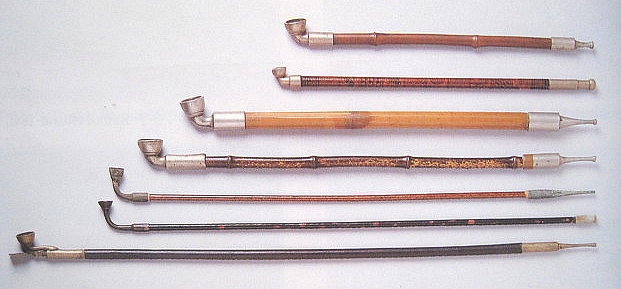
They were both made up of cupronickel (tobacco chamber and mouthpiece) and bamboo (body shaft, which was replaced once in a while as tobacco resin accumulates over time). Some jang-jook were as long as 2 to 3 m and needed a servant to pack tobacco into the chamber. The upper class had servants called yun-dong (연동; for men) and yun-bi (연비; for women) who were usually young boys or girls who carried not only the tobacco pipes but also all the accessories needed (such as flint, pouch, cases, etc.) for their masters. The upper class also decorated their pipes and made them out of expensive materials such as gold, silver, amber, fossils, etc., things that normal or poor people could obviously not afford.
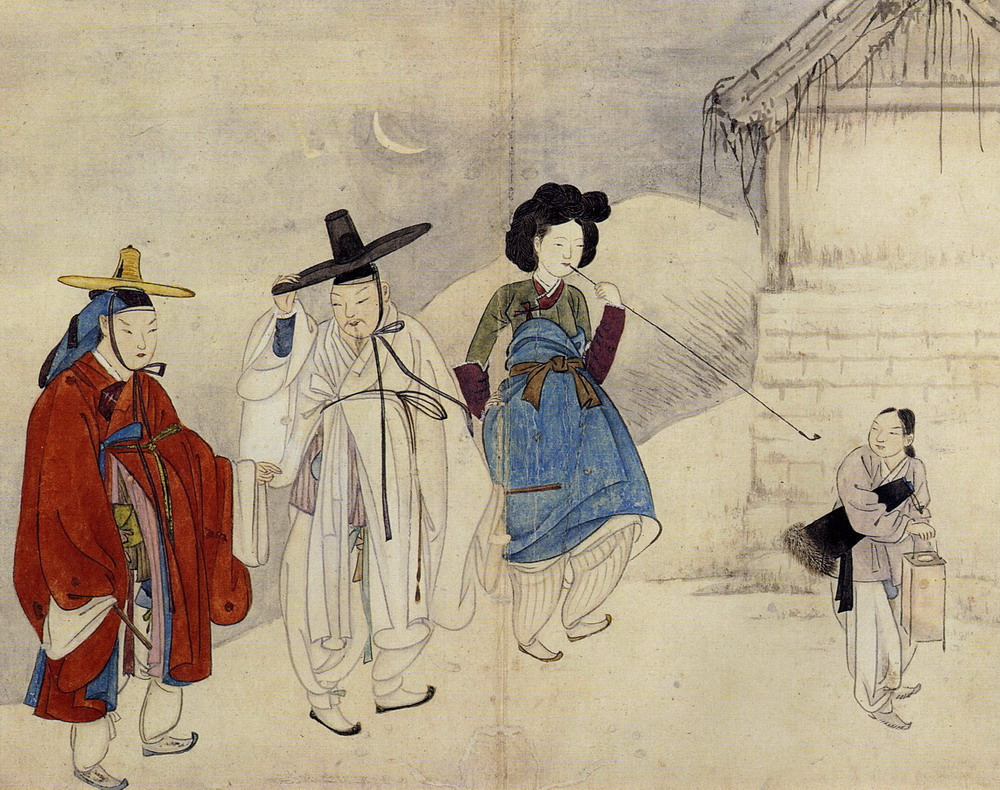

by Shin Yun-bok (신윤복). Source: Gansong Art Museum, Korea.
Interestingly, the only exception to these strict unofficial rules of smoking were the gi-saeng (기생; Korean geishas). They had a previlege of using long pipes even though they were not nobles or of high social class.
Then during Dae Han Jae Guk (대한제국; Korean Empire) Reformation movements in the early 20th century, the government banned the usage of absurdly long jang-jook to reduce ridiculously ornate luxury lifestyle of the upper class.
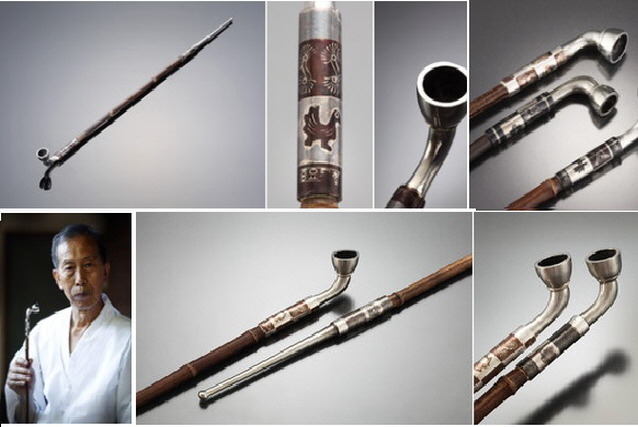
The pipes are still produced in Korea today. Mr. Hwang Yung Bo (황영보), one of Korea’s national Intangible Cultural Heritage, is the master artisan of cupronickel and bamboo tobacco pipe making. You can see his work and how the pipes are made here (website in Korean).
Hope you found this interesting. Until next time!
Cheers,
Ayeon
Sources
- “Treaties on Practical Topics” by Yi Ik, 1740.
- “Tobacco, a White Fog that Covered Joseon” produced by EBS History Channel e, 2014.
- Sungsil University Museum archives.
- Seong-ho Memorial Hall.
- Database of Korean Classics.
- The Annals of Joseon Dynasty (조선왕조실록), 15 February 1623.
- Yungmin Lee, Sowon Jung, Soojung Huh, Yerim Hong, Hanyang University.
- Chung-Jang-Gwan-Jeon-Suh (청장관전서), Volume 31, Yi Duk-Moo, 1795
- Yeol-ha Il-gi (열하일기), Bak Jiwon, 1780.
- Korea Cultural Heritage Foundation.








